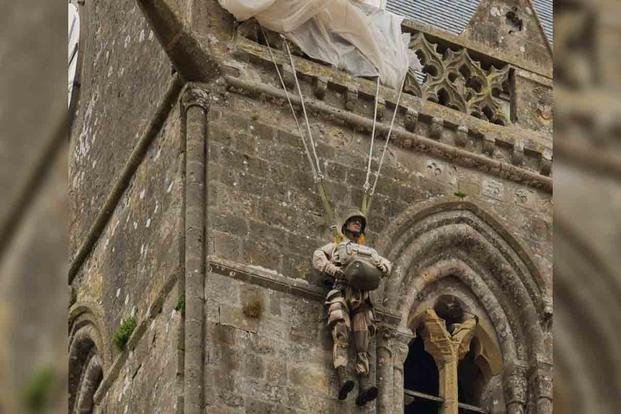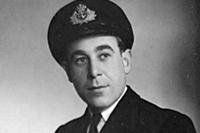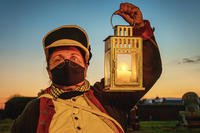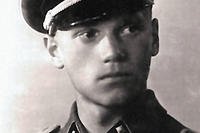Dangling from a church steeple probably wasn't the way Pvt. John Steele ever imagined himself in the fight to liberate France from the grip of Nazi domination, but that's what happened. He, like hundreds of other paratroopers from the U.S. Army's 82nd Airborne Division, made the jump into occupied France on D-Day, June 6, 1944.
Steele had already jumped into combat in places like Sicily and the Italian Peninsula by the time he jumped into Operation Overlord. None of those jumps ever ended like that one. His trajectory took him over the town square of Sainte-Mère-Église that morning. His parachute took him by surprise when it became caught on the church steeple in the middle of the French commune.
There he hung, pretending to be dead, trying to figure out what to do next.
Steele was one of 12,000 men from the 82nd Airborne to land in France as part of the D-Day invasion. Some 6,000 paratroopers and 6,000 glidermen boarded hundreds of planes with the mission of capturing Sainte-Mère-Église and securing the bridges over the rivers behind Utah Beach.
Paratroopers from the 82nd began floating in at 1:30 in the morning, unfortunately lit from below, after an Allied air raid started fires in the town square. Townsfolk mobilized to fight the fires by ringing the church bells. As they fought, they were supervised by the Germans, who began to notice it was raining men.
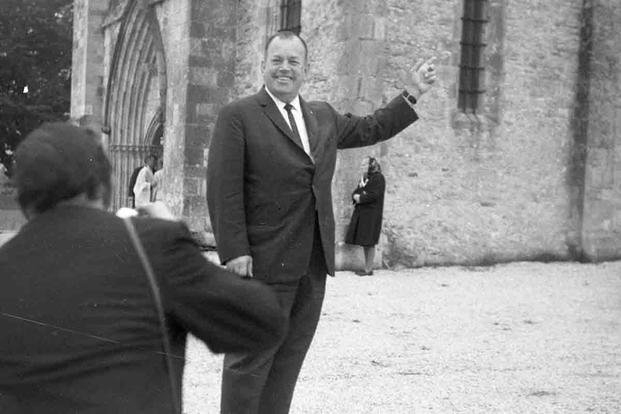
The paratroopers from the 1st and 2nd Battalions of the 505th Parachute Infantry Regiments weren't supposed to fall into the town square, but those who did landing it what became a shooting gallery for the defending Germans. Steele was hit in the foot by flak as he fell and noticed he was headed right for a burning building.
Rather than land in a raging fire, he altered his trajectory as much as possible. He narrowly avoided the fire, but he became attached to the town church's steeple. To make matters worse, he'd lost his knife on the way down and could not cut himself free.
For two hours, Steele pretended to be dead. At first, the ruse worked. No one on either side of the fighting stopped to help him, because both the Americans and the German defenders were convinced he had died.
Unlike the Americans, however, the Germans wanted to get intelligence from the body of the "dead" paratrooper and went to cut him down. That's when they discovered he was very much alive. He was then taken prisoner.
Not too long after he was finally brought down from the steeple, the 3rd Battalion attacked Sainte-Mère-Église at 4:30 in the morning. They captured 30 of the 41 German defenders and took them prisoner. The other 11 were killed.
Sainte-Mère-Église became the first town in Europe to be liberated by the Allies, and was secured when tanks and other forces moved in from the Normandy beachhead on June 7. Steele was wounded in the battle for Sainte-Mère-Église, but survived the war.
Though Steele died in 1969 from throat cancer, he returned to the town in 1964 for a regimental reunion, where he was made an honorary citizen. He told onlookers he was excited to see the church and the town, this time "from the ground up."
Steele was immortalized forever in a pub near the church, called Auberge John Steele and by actor Red Buttons, who depicts his ordeal in the 1962 film "The Longest Day." Even today, a mannequin attached to a parachute still hangs over the steeple of the town church, which features stained glass of the Virgin Mary surrounded by falling paratroopers.
.
-- Blake Stilwell can be reached at blake.stilwell@military.com. He can also be found on Twitter @blakestilwell or on Facebook.
Want to Learn More About Military Life?
Whether you're thinking of joining the military, looking for post-military careers or keeping up with military life and benefits, Military.com has you covered. Subscribe to Military.com to have military news, updates and resources delivered directly to your inbox.
